(NLDO) - The "Red Princess" lived more than 2,000 years ago and is unlike any other remains previously discovered in China.
At the Shengjindian cemetery site in Xinjiang, China, along the ancient Silk Road, archaeologists discovered the remains of an unidentified young woman. They nicknamed her "Red Princess".

Portrait of the "Red Princess" resting on the Silk Road - Graphic image from the research team
According to Science Alert, this ancient cemetery includes 31 tombs containing many valuable burial objects such as silk, pottery, gold and bronze artifacts, glass beads and agate....
The "Red Princess" was found in a crypt containing the remains of three other people, including a child.
She died about 2,050-2,200 years ago and was only 20-25 years old at the time.
However, what caught the attention of archaeologists was that the "Red Princess" was unlike the other remains in the tomb, as well as all other remains previously discovered in China.
Writing in the scientific journal Archaeological and Anthropological Sciences , a Chinese-American research team led by Jilin University (China) said there were strange marks on the teeth of the "Red Princess".
They conducted tests and determined that the substance was cinnabar, which had been intentionally applied to the teeth and not accidentally contaminated from the environment in the tomb.

Traces of cinnabar are still clearly visible on the young woman's teeth after more than 2,000 years - Photo: Archaeological and Anthropological Sciences
According to researchers, cinnabar plays a prominent role in some ancient rituals as well as traditional medicine. It has psychotropic properties that make it useful as a hallucinogen.
Still, evidence suggests that more than one ritual stained the Red Princess' teeth with cinnabar.
Analysis shows that she used it frequently in her life. Since the custom of tooth dyeing also appears in some ancient Asian cultures, scientists speculate that the red color may have been a sign of her status.
In addition, cinnabar is also notable for not being a local commodity. The nearest cinnabar mines in China are located in provinces quite far from Xinjiang. There are also a number of other mines located in the Near East and Europe.
In those days, usually only people of status could afford to buy imported goods.
Although it is impossible to determine whether she was actually a princess, given the geographical distribution of cinnabar and other details in the tomb, in the ancient cemetery, the authors suggest that the tomb owner was "unusual enough to have access to this valuable resource."
Source: https://nld.com.vn/phat-hien-mo-cong-chua-do-bi-an-ben-con-duong-to-lua-196250326114355713.htm






![[Photo] Prime Minister Pham Minh Chinh chairs the Government's special meeting on law-making in April](https://vstatic.vietnam.vn/vietnam/resource/IMAGE/2025/4/13/8b2071d47adc4c22ac3a9534d12ddc17)




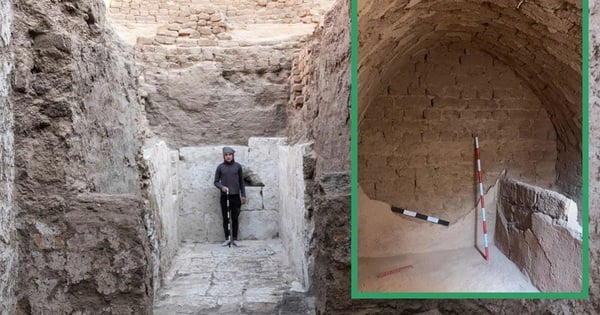
















![[Photo] Closing of the 11th Conference of the 13th Central Committee of the Communist Party of Vietnam](https://vstatic.vietnam.vn/vietnam/resource/IMAGE/2025/4/12/114b57fe6e9b4814a5ddfacf6dfe5b7f)































































Comment (0)